Like every climber ever to grace this earth, I suffer from non-optimal skin. It sweats too much, it’s too thin, it’s cracked, it’s split, it just hurts. I’ve tried damn near every chalk there is. So far, the best I’ve been able to figure is Antihydral about once a week and plain old block chalk before every go.
Recently I was reading Dave Macleod’s Online Climbing Coach blog and saw a review for Liquid Grip. I’ve tried Liquid Chalk and I like it, but it requires reapplication and is otherwise a pain in the butt for me. Liquid Grip is supposed to be an “apply and forget” sort of product, which would solve my main complaint with liquid chalk, so I figured it was worth a try.
The company gives the somewhat dubious claim that the product adheres to the amino acids in your skin and will not transfer to other surfaces. Of course I perked up when Dave gave it a positive review, but I grimaced when I read that “there is a small amount of Rosin (less than 5%) in the product and they reassure that there is no transference to surfaces although didn’t say how this was tested.”
I sent away to Liquid Grip for a few samples. On one hand, LG could very well be a manna for los manos. On the other, I’m very concerned about rosin being used on rock, because over time it forms a slick coating to the rock and destroys the friction of the original surface. I set out to test the no transference claim myself, and see if it was safe for use on real rock.
Methods
I was nervous to directly test the product on popular boulder problems in case there was some transference. Instead, I decided to do a more traditional experiment, with a control and a variable.
I chose a chunk of solid sandstone in our campground and subjected two different parts of it to a series of simulated grabs. I applied some Liquid Grip to my left hand and washed my right hand clean. The right hand was the “control” in this case, as I would use only block chalk as if I were really climbing. The lip of the boulder was slopey and uniform in texture, and I crouched down and slapped each of the “holds” 50 times.
During the treatments, I reapplied Liquid Grip once to my left hand, and I chalked up my right hand several times (again, as if I were normally climbing). According to Liquid Grip, only one application would be enough for 90 minutes, since there is no transference. I felt that about 25 attempts at sticking one crux hold is a decent approximation of one session. This experiment, then, represents roughly two individual sessions on a hard move to a sloper.
After the simulated grabs, I used a Moon horsehair brush rather vigorously on the two “holds” to brush off the excess. The question, after all, is how persistent the residue is. Chalk clogs holds too, but is easily removed with a brush.
Results
Upon applying Liquid Grip, you’ll notice that it smells nice (a bonus), and takes a bit longer to dry than Metolius Liquid Chalk. Unlike Liquid Chalk, Liquid Grip doesn’t result in a cloud of dust if you clap your hands. In other words, the binding/no-transference claim seems to stand up.
Liquid Grip also felt smoother, like it wouldn’t overly dry my hands. I washed my hands after the experiment so I can’t say what long term use would do to your skin.
During the grabbing, I noticed that the product did adhere to my skin much better than traditional chalk, but as the photos show, some of the product definitely transferred to the rock.
After the grabbing and brushing, the chalk-only treatment was as expected. The rock was lighter in color, of course, but the texture was all still there. No chalk stayed caked in the grit of the rock.
The Liquid Grip treatment, on the other hand, showed definite signs of losing texture. The photos show it fairly well. Even after a vigorous brushing, there was an obvious residue in between the grains of the sandstone.
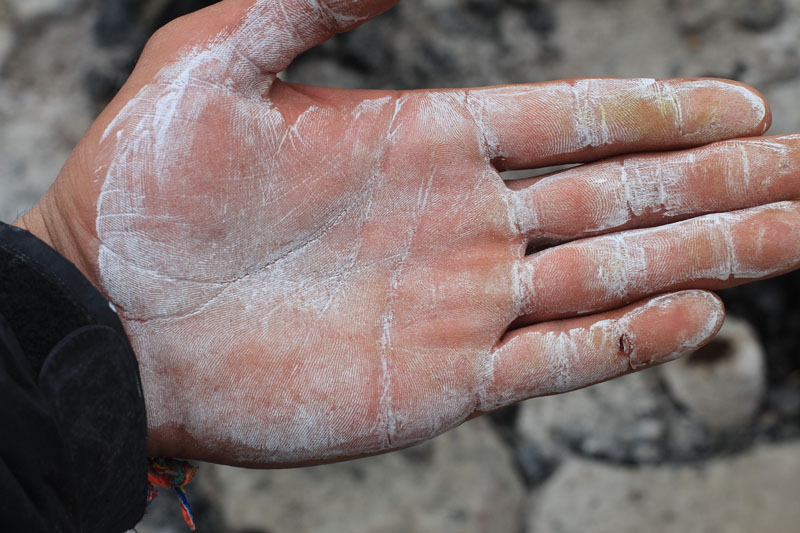
This is my hand after 25 “grabs.” Much of the product remains, though some has clearly transferred to the rock surface. I then reapplied and did 25 more grabs.
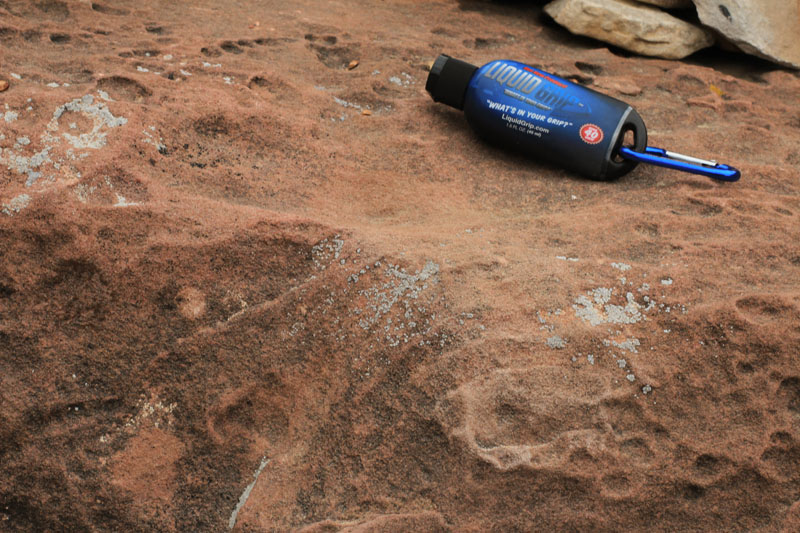
The Liquid Grip test spot after 25 grabs and no brushing. Note the fairly natural color of the rock, due to the low transference of the product.
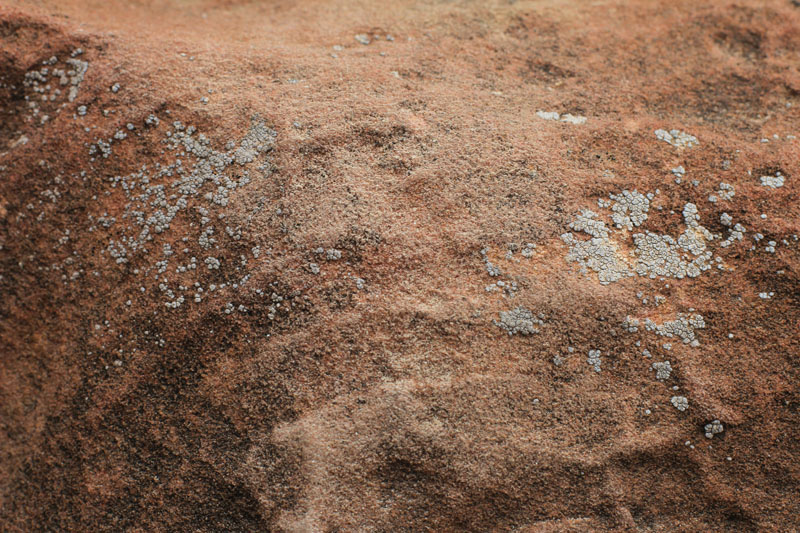
This is the Liquid Grip treatment spot after two applications and 50 simulated grabs. I have not yet brushed this spot. Note that on protrusions, you can see some residue.
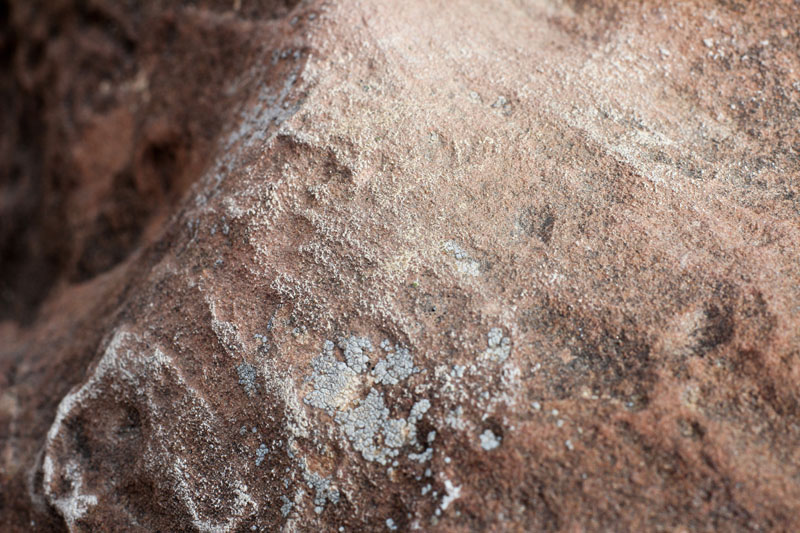
This is the Liquid Grip spot after a thorough brushing. You can still see a lot of residue in the grains of the sandstone.
Conclusion
Liquid Grip should not be used on outdoor rock climbs. The photos clearly show that after two applications and 50 simulated grabs of a sloper, the texture of the rock is severely impacted. If one person used Liquid Grip to climb one boulder problem, and it took them one attempt, there might be no impact. But if many people use Liquid Grip on a popular problem, however, the results will be dramatic and very undesirable. Even after two days and a light rain, the Liquid Grip spot on the boulder in our campground is quite visible.
I think previous reviewers missed the transference because they used it “as usual.” This would mean just climbing a few routes or problems, and over the course of a few laps one wouldn’t notice a particular hold getting gummed up. On the other hand, if this were used on something like The Hulk, a popular problem with a distinct crux, I’m sure that the repeated touching of the same holds would result in a very noticeable impact.
Liquid Grip might be a good solution for indoor climbing. Holds are washed fairly regularly, and the reduction in chalk dust would be a major benefit. I can’t speak to the product for other uses, though I did notice my hand feeling more “conditioned” than the chalked hand. Perhaps this would be a good product for weightlifters or gymnasts who need a little extra grip but for whom chalk is too dry.
I realize there are other rosin-containing liquid chalk products on the market for climbers, but I haven’t tried them out. I suspect the issues might be the same. At the moment, I think the overall impact is fairly minimal since only a small minority of climbers use anything besides normal chalk, but if these products become popular, I would start to worry.
Do you use Liquid Grip? How do you like it? Have you noticed any transference to the rock?

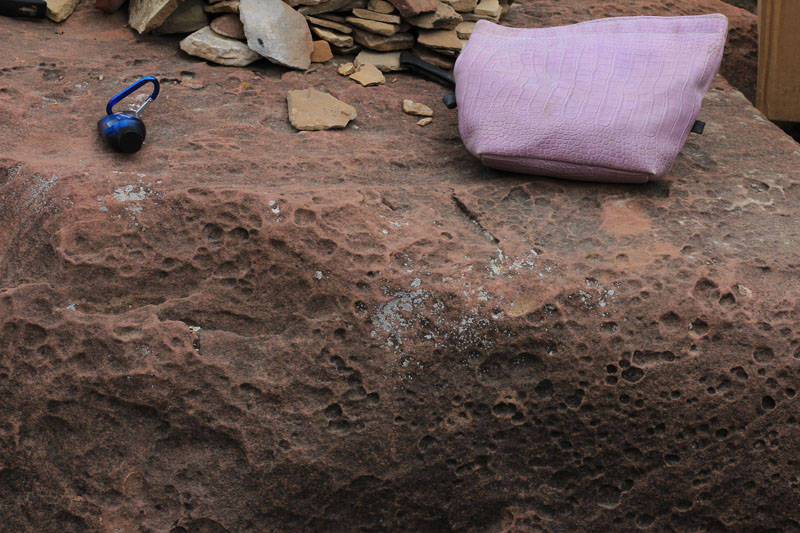
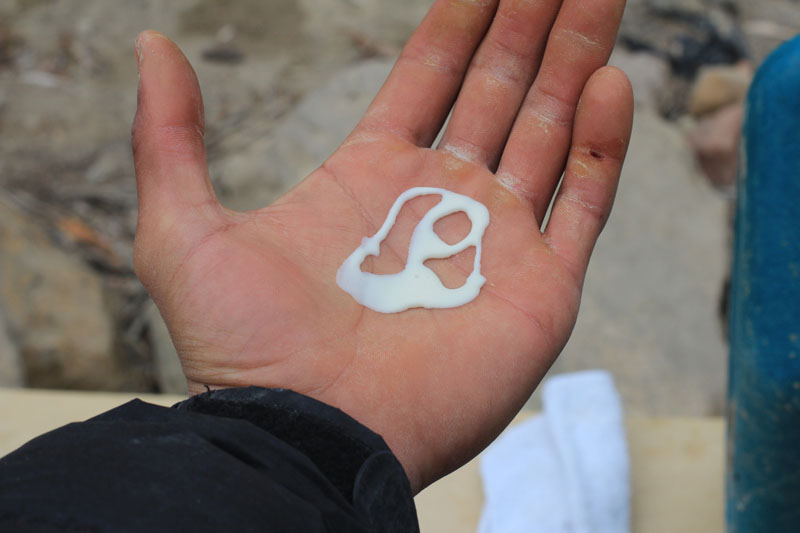
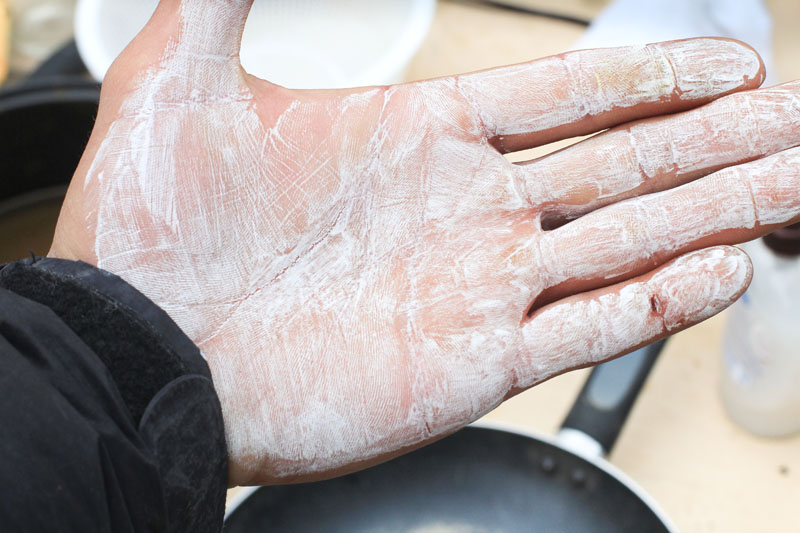
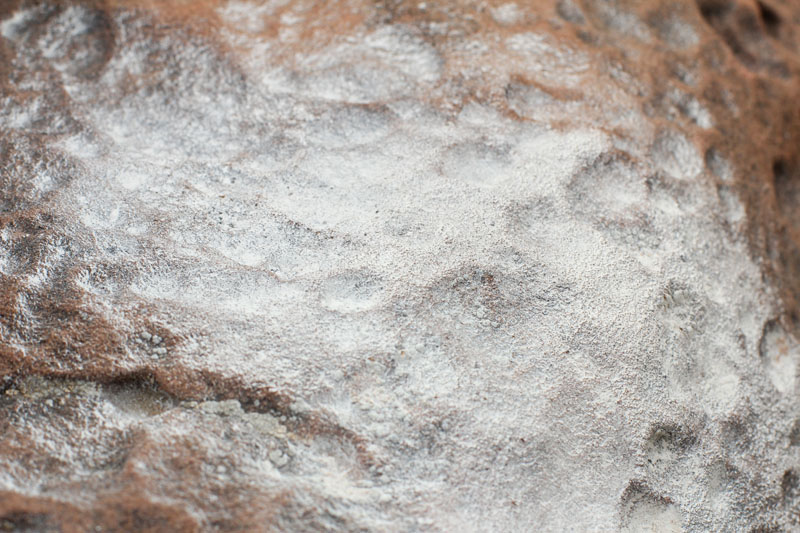
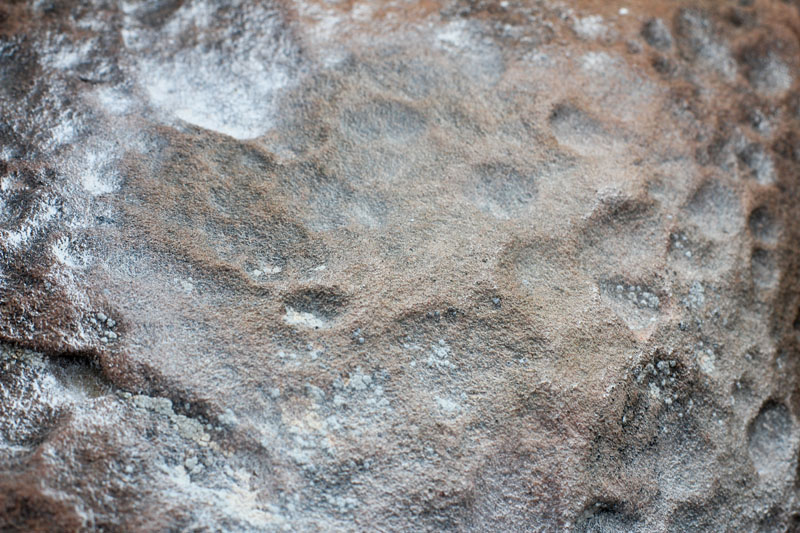
Do you know if LiquidChalk is the same as Edelweiss Stic It? Both have resin
http://www.edelweiss-ropes.com/en/accessoires/74-stic-it.html
Hmmm, I haven’t seen this Stic It product before. I can tell you it’s not the same, as the LiquidGrip product that I looked at here has chalk as well as resin and other ingredients. Based on my personal experience and best guess, seems like this Edelweiss product shouldn’t be used for climbing either. Have you tried it before?